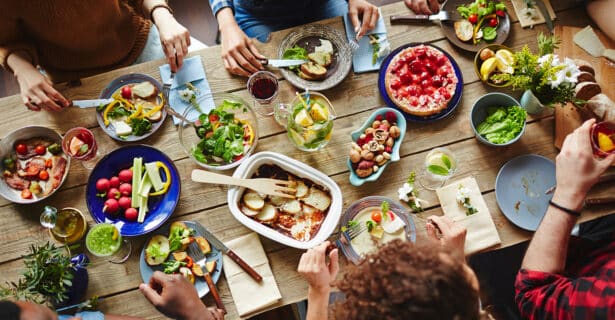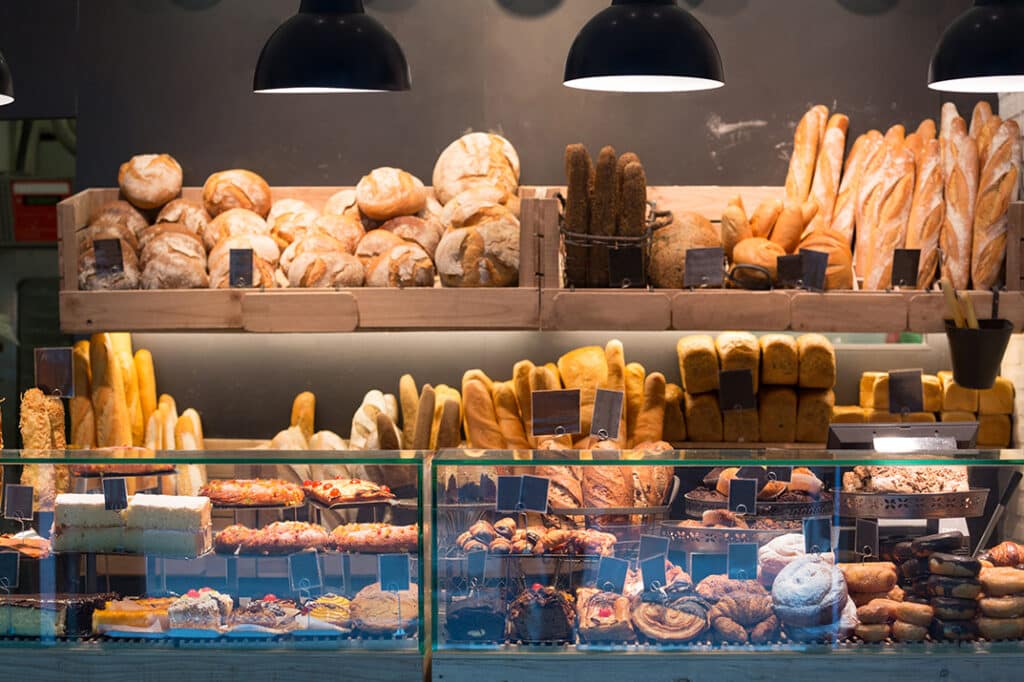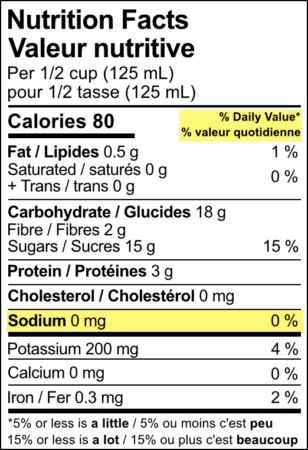
Eat Less Salt
Sodium
Did You Know?
Most North Americans eat almost double the recommended amount of sodium each day.
Following the DASH eating pattern and eating less sodium each day can help lower your blood pressure.
The terms ‘salt’ and ‘sodium’ are often used as though they are the same thing, but they are different.
Sodium is a mineral that is found naturally in foods or added to foods by food makers.
Table salt is a mixture of sodium and chloride. By weight, salt is about 40% sodium and 60% chloride.
Your body needs some sodium, but too much sodium in your diet is linked to high blood pressure.
What is Blood Pressure?
Your heart pumps blood around your body through blood vessels. Blood pressure measures the force of your blood against your blood vessel (artery) walls.
High blood pressure happens when the force of blood against your blood vessel walls is too strong. High blood pressure is called ‘hypertension’. There are often no signs of high blood pressure, but when blood pressure is high, it can damage your heart, eyes, kidneys, and brain.
People living with diabetes often have high blood pressure. High blood sugar makes it more likely that you will have high blood pressure. Over time high blood pressure can damage your blood vessel walls and lead to heart disease and stroke.
People living with diabetes are at a very high risk of heart disease and stroke. Coronary heart disease is the most common type of heart disease for people with diabetes.
Take action to prevent or manage high blood pressure:
- Eat more fresh, whole foods
- Limit foods with hidden sodium
- Read the nutrition facts table
- Drink less alcohol
- Exercise
How To Eat Less Sodium
Lower the amount of sodium you eat to prevent or manage high blood pressure.

Learn how to shop for lower sodium foods
Eat more fresh, whole foods
Include foods that are naturally low in sodium including:
- fruit (fresh or frozen)
- vegetables (fresh or frozen)
- whole grains (such as oats, barley, rice, and quinoa)
- legumes (such as chickpeas, lentils, dried beans, and low sodium or no salt added canned beans)
- fish, poultry and lean meats (fresh or frozen)
- unsalted nuts and seeds
Limit foods high in sodium
Some foods have ‘hidden’ sources of sodium. This means that the food may not seem very salty, but it actually has a large amount of sodium.

An example of hidden sources of sodium are bakery products (like breads, bagels, muffins, granola bars, cookies, pastries, naan and pita bread). Many of these foods don’t taste very salty, but they actually contribute a lot of the sodium in the North American diet.
Restaurant meals, fast foods and prepared foods from the counter at grocery stores are examples of hidden sources of sodium. These foods can be high in sodium because of added salt, seasonings, sauces, gravies, marinades, and toppings that are high in sodium like processed meats, condiments, and cheese.
Most of the sodium that people eat comes from the salt added to processed, prepared foods and meals prepared at restaurants. Fresh, whole foods that you prepare at home are naturally low in sodium.
- Cook more often at home using fresh, whole foods to eat less sodium.
- Avoid adding extra salt to your food. Taste your food first before you add more salt.
- Eat less processed, prepared, and packaged foods, such as frozen dinners, canned soups, instant side dishes, sauces and pickles. A lot of sodium can be found in these foods.
- If the food comes in a package, you can read the nutrition facts table to know how much sodium is in the food.

Find out more about reading food labels »
Read the nutrition facts table
- Think about the serving size and how much you will eat.
- Choose products with less than 200 mg of sodium per serving or 5% or less daily value of sodium (% DV).
Learn more about reading a nutrition facts table »
Dietary Approaches to Stop Hypertension (DASH)
Research shows that a Dietary Approaches to Stop Hypertension (DASH) eating pattern can lower your blood pressure.
Key features of the DASH eating pattern include choosing to eat:
- plenty of vegetables and fruit
- unsalted nuts and seeds
- whole grains, fish, poultry, and nuts
- more legumes and fish
- lower fat dairy products
- less processed foods that are high in sodium
- lower amounts of red meats, sweets, and drinks that contain sugar
The DASH eating pattern is about eating fresh, whole foods and more plants in place of processed and prepared foods. The DASH eating pattern helps to lower blood pressure because it contains key nutrients, such as potassium, calcium, and magnesium. These nutrients help to lower blood pressure.
What Amount of Sodium is OK?
The recommended daily amount of sodium for adults is 1,500 mg per day. This is about the same amount of sodium that is found in ⅔ of a teaspoon of table salt. It is recommended to stay below the limit of 2,300 mg of sodium each day, which is equal to about 1 teaspoon of table salt.
Most North Americans eat almost double the daily goal of 1,500 mg of sodium.
Following the DASH eating pattern can help you lower your blood pressure, even if you don’t reduce how much sodium you eat. But studies show that you can lower your blood pressure even more if you follow the DASH eating pattern and eat less sodium each day. The best effects on blood pressure were seen when a DASH eating pattern was combined with a limit of 1,500 mg of sodium per day.
Learn more about how to lower your blood pressure on Cardiac College »